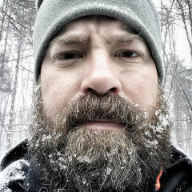Choosing a Satellite Beacon
I’m heading to Utah in a few weeks. For those who’ve talked to me for more than 10 minutes, you know that Utah is my Mecca. So needless to say, I’m super excited.
I plan on driving about 2,000 miles around southern Utah over nine days. One of my stops is the amazingly beautiful, Reflection Canyon. If you have not seen pictures of this place, do yourself a favor and Google it now.
Here’s the kicker — getting to Reflection Canyon requires driving down a very rough and unpatrolled “road” for about two hours. From there, you have to hike in complete wilderness (no paths, signs or guides of any kind) for 10 miles. Needless to say, there is no cell coverage and no water access of any kind the whole time.
Despite me being overly prepared with tools and skill sets, I am concerned about the inability to call for help if the need arises. One of the seven principles of survival taught at True North is the ability to signal for help. And while I have plenty of options currently in my arsenal of gear, all of them rely on someone knowing that I need help and subsequently come looking for me. Gear such as strobes, signal fire equipment, mirrors, whistles, etc.
In such a remote area, I’m not sure how effective those will be as a primary means especially if I have a life threatening medical emergency that requires help in the next few hours rather than days.
So based on that, I have been looking into purchasing a satellite beacon for added assurance. It’s been a while since I’ve researched the field and boy has it become filled with tons of options.
I’ll save you the heavy details but in short, satellite beacons can be put in one of two categories: Personal Locator Beacons (PLBs) or satellite messengers (SMs). So what’s the difference? Simply put, PLBS are an “Oh Sh*t!” button. They are rugged, simple to use beacons that when activated, send out a signal via satellites (usually received by NOAA) to let the responders know you are in an emergency. That’s it — nothing fancy but everything you need to effectively get the word out.
Satellite messengers are filling the gap for outdoor enthusiasts who need a satellite enabled SOS device when cell coverage is not available, but must have a way to stay in touch with others either via text messaging or social media. Now, before you get out the pitchforks and claim that the whole reason for getting outdoors is to get away from that, there is a very real need for such abilities other than just Instagram selfies. Many professional outdoor athletes and photographers as well as those who work in remote areas such as those in the geological industry rely heavily on being able to communicate back to the front country on what they are up to and where they are at.
With that, the million dollar question is which one to choose?? Even though I am not a professional who relies on getting my info out there in real time, I would like the ability to show-off my amazing selfies, maybe send a text or two, and creep on a few Facebook pages. In addition, most SMs have built in GPS navigation systems complete with topo maps. I find that to be a nice added feature in the backcountry. But of course, there’s a downside to satellite messengers and, chiefly, that is cost. They are $100-200 more expensive than a PLB and you have to pay for a subscription to the service — which is not cheap. And in some models, the SOS function does not work without a subscription.
On the converse, PLBs are much cheaper, super easy to use, do not require a subscription, and have the highest transmission power (up to 5 watts compared to .4-1.6 for most SMs). But, sadly, no guided GPS, selfies, or Perez Hilton updates. Which doesn’t bother Instructor Erik one bit since, unlike me, he doesn’t care about accessing social media when he is in the woods so he prefers to carry a PLB, in particular one manufactured by ACR Artex.
So if you are in the market or are kicking around the idea of an emergency beacon, you should ask yourself what is the most important feature: two-way communications, ease of use, or price? And then chose based on your needs and risk factors.
Enough about me, let’s hear from you. I’m curious to get your feedback on what you would prefer to use on your adventures.

